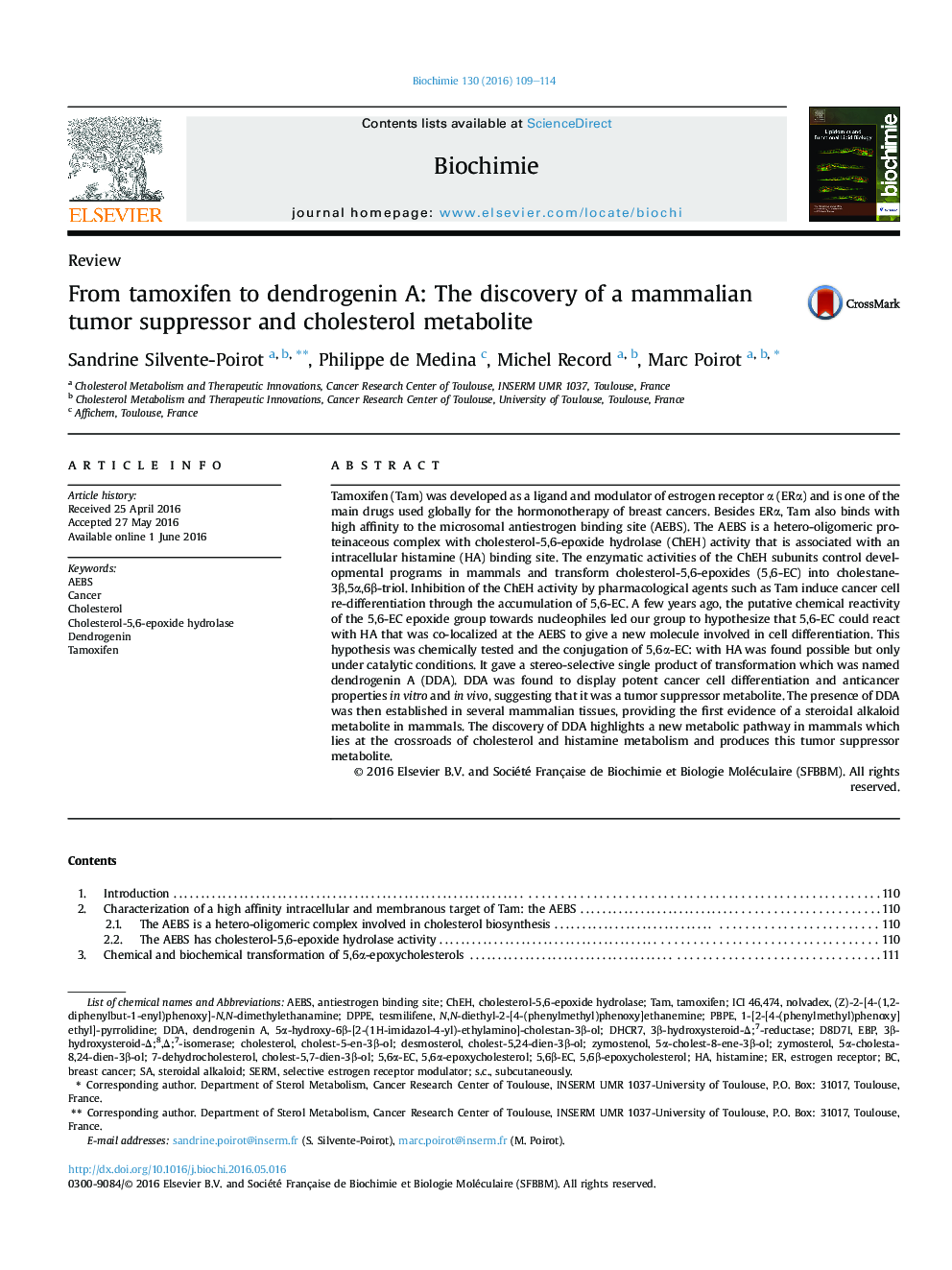| کد مقاله | کد نشریه | سال انتشار | مقاله انگلیسی | نسخه تمام متن |
|---|---|---|---|---|
| 5509053 | 1538402 | 2016 | 6 صفحه PDF | دانلود رایگان |

- The microsomal antiestrogen binding site is the cholesterol-5,6-epoxide hydrolase.
- Tamoxifen induces breast cancer cell differentiation via 5,6α-epoxycholesterol accumulation.
- Under catalytic conditions histamine and 5,6α-epoxycholesterol gives dendrogenin A.
- Dendrogenin A is a mammalian steroidal alkaloid.
- Dendrogenin A is a tumor suppressor cholesterol metabolite.
Tamoxifen (Tam) was developed as a ligand and modulator of estrogen receptor α (ERα) and is one of the main drugs used globally for the hormonotherapy of breast cancers. Besides ERα, Tam also binds with high affinity to the microsomal antiestrogen binding site (AEBS). The AEBS is a hetero-oligomeric proteinaceous complex with cholesterol-5,6-epoxide hydrolase (ChEH) activity that is associated with an intracellular histamine (HA) binding site. The enzymatic activities of the ChEH subunits control developmental programs in mammals and transform cholesterol-5,6-epoxides (5,6-EC) into cholestane-3β,5α,6β-triol. Inhibition of the ChEH activity by pharmacological agents such as Tam induce cancer cell re-differentiation through the accumulation of 5,6-EC. A few years ago, the putative chemical reactivity of the 5,6-EC epoxide group towards nucleophiles led our group to hypothesize that 5,6-EC could react with HA that was co-localized at the AEBS to give a new molecule involved in cell differentiation. This hypothesis was chemically tested and the conjugation of 5,6α-EC: with HA was found possible but only under catalytic conditions. It gave a stereo-selective single product of transformation which was named dendrogenin A (DDA). DDA was found to display potent cancer cell differentiation and anticancer properties in vitro and in vivo, suggesting that it was a tumor suppressor metabolite. The presence of DDA was then established in several mammalian tissues, providing the first evidence of a steroidal alkaloid metabolite in mammals. The discovery of DDA highlights a new metabolic pathway in mammals which lies at the crossroads of cholesterol and histamine metabolism and produces this tumor suppressor metabolite.
184
Journal: Biochimie - Volume 130, November 2016, Pages 109-114